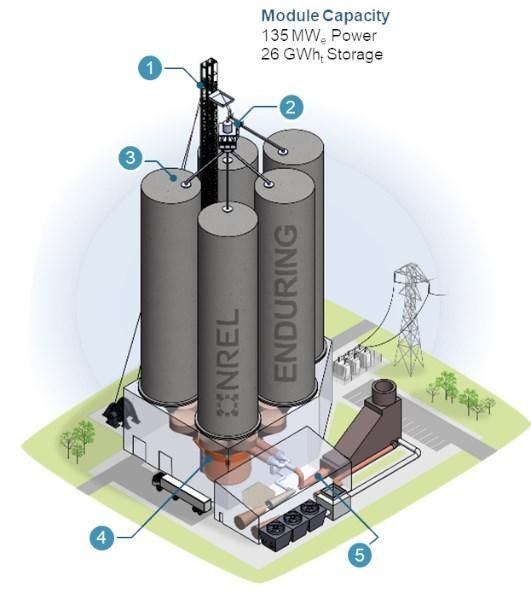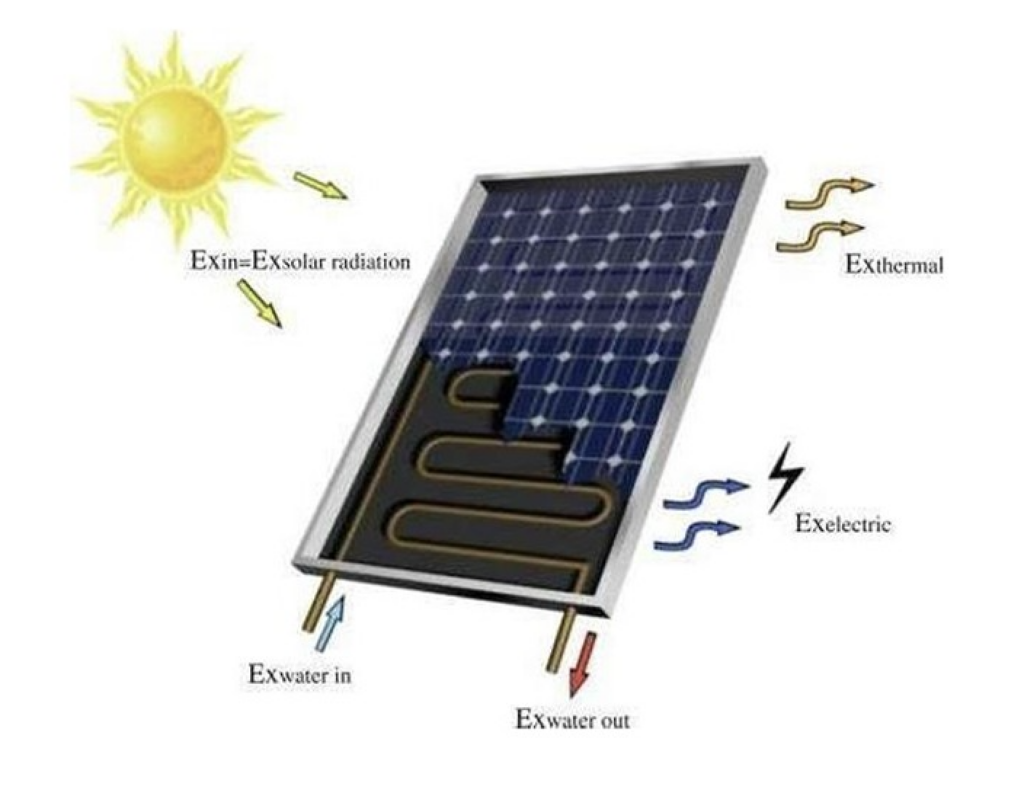Wind Turbine Pitch and Yaw Drive Market Size to Hit USD 13.62 Billion by 2032 | Research by SNS Insider – GlobeNewswire
/saur-energy/media/post_attachments/2024/12/suzlon-jindal-order.jpg)
Market Analysis of Wind Turbine Pitch and Yaw Drives and Contribution to Sustainable Development Goals
Executive Summary
The global market for wind turbine pitch and yaw drives is poised for significant expansion, reflecting a worldwide commitment to renewable energy and sustainable development. The market was valued at USD 7.64 billion in 2024 and is projected to reach USD 13.62 billion by 2032, expanding at a Compound Annual Growth Rate (CAGR) of 7.54%. In the United States, the market is forecast to grow at a CAGR of 7.10%, reaching USD 1.72 billion by 2032. This growth is intrinsically linked to the global effort to achieve key Sustainable Development Goals (SDGs), particularly those related to clean energy and climate action.
Alignment with Sustainable Development Goals (SDGs)
The expansion of the wind turbine pitch and yaw drive market is a critical enabler for achieving several United Nations Sustainable Development Goals:
- SDG 7 (Affordable and Clean Energy): By improving the efficiency and reliability of wind turbines, advancements in pitch and yaw drive systems directly contribute to increasing the share of renewable energy in the global energy mix. This supports the transition to affordable and clean energy for all.
- SDG 13 (Climate Action): The deployment of wind energy is a primary strategy for decarbonizing the power sector. The growth of this market facilitates the expansion of wind power capacity, which is essential for mitigating climate change and meeting national and international emission reduction targets.
- SDG 9 (Industry, Innovation, and Infrastructure): The continuous development of more advanced drive systems, such as electric pitch systems, represents significant innovation. The construction of onshore and offshore wind farms constitutes the development of resilient and sustainable infrastructure, fostering industrial growth in the green technology sector.
Market Drivers and Growth Projections
The market’s robust growth is propelled by a confluence of factors aligned with global sustainability targets. Nations are increasingly implementing wind energy projects to meet carbon emission objectives, supported by government policies, tax incentives, and renewable energy mandates. Technological advancements, particularly the shift towards more efficient and reliable electric drive systems, are enhancing turbine performance and safety, further stimulating market demand.
Key drivers for the U.S. market include:
- Replacement of older turbine fleets with modern, more efficient technology.
- Grid modernization initiatives to accommodate renewable energy sources.
- Strong federal and state policies favoring decarbonization and wind energy adoption.
Detailed Market Segmentation Analysis
By Type
- >3000 W: This segment held the dominant market share of 67.2% in 2024, driven by the deployment of large-capacity turbines in major onshore and offshore wind farms, which are crucial for large-scale contributions to SDG 7.
- 1000 W – 3000 W: This segment is projected to exhibit the most rapid growth, fueled by rising demand for cost-effective, medium-sized turbines suitable for new markets and community-based energy projects.
By Pitch System
- Electric Systems: Accounting for 57.4% of the market in 2024, electric pitch and yaw systems are expected to see the highest CAGR. Their adoption is driven by superior efficiency, enhanced reliability, and reduced maintenance requirements compared to hydraulic or mechanical alternatives.
By Size
- Medium-Sized Turbines: This segment led with a 46.6% market share in 2024, offering an optimal balance of efficiency, cost, and installation flexibility.
- Large Turbines: This segment is forecast to experience the highest CAGR, propelled by the strategic shift towards large-scale offshore wind farms capable of generating substantial amounts of clean energy.
By End-Use
- Onshore: Onshore wind farms constituted the largest market share at 71.5% in 2024, primarily due to lower construction and operational costs.
- Offshore: The offshore segment is projected to grow at the highest CAGR. Offshore farms benefit from higher and more consistent wind speeds, leading to greater energy generation potential and a more significant impact on achieving national renewable energy targets under SDG 7.
Regional Market Dynamics
- Europe: As the market leader with a 37.7% share in 2024, Europe’s growth is driven by ambitious renewable energy targets and supportive regulatory frameworks designed to advance its climate action goals (SDG 13).
- Asia Pacific: This region is projected to record the highest CAGR of 8.4% between 2025 and 2032. This rapid expansion is a result of increasing energy demand, substantial investments in renewable infrastructure, and strong government support for clean energy initiatives.
Key Industry Developments
- December 2024: Nordex Group secured an order from UKA for 80 turbines, totaling 540 MW, for 15 projects across Germany, including a 20-year service agreement.
- April 2025: GE Vernova and BBWind signed an agreement to supply three 6.0 MW onshore wind turbines for community wind farm projects in Germany, demonstrating continued investment in decentralized clean energy.
Leading Market Participants
- Siemens Gamesa
- Nordex
- GE Renewable Energy
- Suzlon
- Mitsubishi Heavy Industries
- Senvion
- Dongfang Electric
- Hansen Transmissions
- Vestas
- ZF Friedrichshafen
Analysis of Sustainable Development Goals (SDGs) in the Article
1. Which SDGs are addressed or connected to the issues highlighted in the article?
-
SDG 7: Affordable and Clean Energy
The entire article focuses on the growth of the wind turbine market, a key component of renewable and clean energy. It discusses the global implementation of wind energy projects to provide clean power, directly aligning with the goal of ensuring access to affordable, reliable, sustainable, and modern energy for all.
-
SDG 9: Industry, Innovation, and Infrastructure
The article highlights “grid modernization,” “drive system technology advancements,” and “investments in renewable energy infrastructure.” This points to building resilient infrastructure, promoting inclusive and sustainable industrialization, and fostering innovation, which are the core tenets of SDG 9.
-
SDG 13: Climate Action
A primary driver for the market growth mentioned in the article is the global effort to combat climate change. Phrases like “fulfill carbon emission objectives,” “eradicating” carbon emissions, and “laws that favor decarbonization” explicitly connect the expansion of wind energy to urgent action to combat climate change and its impacts.
-
SDG 8: Decent Work and Economic Growth
The significant market growth, projected to reach USD 13.62 billion by 2032, signifies substantial economic activity. This growth in the renewable energy sector creates jobs in manufacturing, installation, and maintenance, contributing to sustained, inclusive, and sustainable economic growth.
2. What specific targets under those SDGs can be identified based on the article’s content?
-
Under SDG 7 (Affordable and Clean Energy):
- Target 7.2: “By 2030, increase substantially the share of renewable energy in the global energy mix.” The article’s core subject—the rapid growth of the wind turbine market—is a direct contribution to this target. The projected market expansion reflects an increasing share of wind power in the energy mix.
- Target 7.a: “By 2030, enhance international cooperation to facilitate access to clean energy research and technology… and promote investment in energy infrastructure and clean energy technology.” The article mentions “technology advancements,” “investments in renewable energy infrastructure,” and the activities of global companies like Siemens Gamesa and GE Renewable Energy, which points to investment and technological development in clean energy.
-
Under SDG 9 (Industry, Innovation, and Infrastructure):
- Target 9.1: “Develop quality, reliable, sustainable and resilient infrastructure…” The mention of “grid modernization” and the construction of onshore and offshore wind farms are direct examples of developing sustainable and resilient energy infrastructure.
- Target 9.4: “By 2030, upgrade infrastructure and retrofit industries to make them sustainable… with greater adoption of clean and environmentally sound technologies…” The article discusses the shift to more efficient electric pitch and yaw drive systems and the replacement of older turbines, which represents the upgrading of infrastructure with cleaner technology.
-
Under SDG 13 (Climate Action):
- Target 13.2: “Integrate climate change measures into national policies, strategies and planning.” The article explicitly states that market growth is driven by “strong state and federal laws that favor decarbonization” and governments adopting “alluring policies, tax breaks, and renewable energy goals.” This is a clear example of integrating climate action into national policies.
3. Are there any indicators mentioned or implied in the article that can be used to measure progress towards the identified targets?
-
For Target 7.2 (Increase renewable energy share):
- Market Size and Growth: The article provides specific financial figures that serve as a proxy for the growth of renewable energy capacity. The market size increasing from “USD 7.64 billion in 2024” to “USD 13.62 billion by 2032” is a quantifiable indicator of investment and expansion in this sector.
- Compound Annual Growth Rate (CAGR): The projected CAGR of “7.54%” globally and “8.4%” in the Asia Pacific region indicates the rate of expansion of wind energy infrastructure.
- Installed Capacity: The mention of specific projects, such as the “order for 80 turbines from Nordex Group, totaling 540 MW,” provides a direct measure of new renewable energy capacity being added.
-
For Target 7.a (Promote investment in clean energy):
- Investment Figures: The multi-billion dollar market size itself represents the financial investment flowing into clean energy technology and infrastructure.
-
For Target 13.2 (Integrate climate change measures into policies):
- Existence of Supportive Policies: The article implies the existence of these policies by citing them as market drivers: “strong state and federal laws,” “alluring policies, tax breaks, and renewable energy goals.” The presence and strength of these policies are an indicator of progress.
SDGs, Targets, and Indicators Summary
| SDGs | Targets | Indicators Identified in the Article |
|---|---|---|
| SDG 7: Affordable and Clean Energy | 7.2: Increase substantially the share of renewable energy in the global energy mix. |
|
| SDG 9: Industry, Innovation, and Infrastructure | 9.4: Upgrade infrastructure and retrofit industries to make them sustainable, with greater adoption of clean and environmentally sound technologies. |
|
| SDG 13: Climate Action | 13.2: Integrate climate change measures into national policies, strategies and planning. |
|
Source: businessupturn.com
What is Your Reaction?
 Like
0
Like
0
 Dislike
0
Dislike
0
 Love
0
Love
0
 Funny
0
Funny
0
 Angry
0
Angry
0
 Sad
0
Sad
0
 Wow
0
Wow
0
















































:focal(1500,1000)/https://media.globalcitizen.org/a6/9a/a69a4720-d8a1-4715-b596-18738d03c05c/rotary_polio_hero_image.jpg?#)







/countries/sri-lanka/photo-credit---dmc-sri-lanka.tmb-1200v.jpg?sfvrsn=dc298bcc_1#)



















